Research and Application of Role Theory in Ocean Carbon Cycle Ontology Construction
2014-04-26JIAHaipengXIONGJingXUJianliangandWANGJipeng
JIA Haipeng, XIONG Jing, XU Jianliang,, and WANG Jipeng
1) College of Information Science and Engineering, Ocean University of China, Qingdao 266100, P. R. China
2) School of Computer and Information Engineering, Anyang Normal University, Anyang 455000, P. R. China
Research and Application of Role Theory in Ocean Carbon Cycle Ontology Construction
JIA Haipeng1), XIONG Jing2), XU Jianliang1),*, and WANG Jipeng2)
1) College of Information Science and Engineering, Ocean University of China, Qingdao 266100, P. R. China
2) School of Computer and Information Engineering, Anyang Normal University, Anyang 455000, P. R. China
Many researchers have studied the ocean carbon cycle model trying to regulate the level of CO2in atmosphere from viewpoint of quantification. Unlike other researches, this paper analyzes the conversion process of carbon element in the ocean from the qualitative viewpoint. There are many complex roles in the ocean carbon cycle, and it is hard to represent the case that an entity plays different role in different environment. An ontology technology Hozo role theory developed by Osaka University Mizoguchi Laboratory is proposed as a solution. The basic concepts and representation mode of Hozo role theory is introduced. The conversion process of ocean carbon cycle is abstracted and an ontology model using Hozo role theory is proposed. Instead of comprehensive common ontology construction method, we propose our own ontology development steps. Then an ontology about ocean carbon cycle is built in order to describe and share the basic knowledge of ocean carbon cycle. A knowledge base of material circulation is proposed based on the ontology. Its construction framework is described and some knowledge base query examples are also illustrated. Conclusions show that the role theory can effectively solve the problem of multirole description in ocean carbon cycle, and knowledge reasoning based on ontology is also effective.
ocean carbon cycle; ontology; role theory; Hozo; OWL-QL
1 Introduction
The ocean is regarded as the largest active carbon sink on the Earth. Ocean carbon cycle is an important factor of global carbon cycle and contributes to global climate change. Recently, global warming has caused many ocean environmental problems such as sea level rising, marine meteorological hazard and iceberg melting at the two poles. So the researches about ocean carbon cycle receive more and more concerns and have been flourishing.
The researches about ocean carbon cycle model have lasted for more than 40 years. Many theories have come out. Xu et al. (2005) briefly reviewed the history of development of ocean carbon-cycle models from the beginning with the simplest three-box mode, discussed the features of various models appearing at different times, and pointed out the ability of oceanic uptake of atmospheric CO2. Yin et al. (2006) discussed the main advances in research on the marine carbon cycle and biogeochemical processes, which include the air-sea CO2exchange process, the carbon vertical and horizontal transfer in seawater, the carbon flux between seawater and sediment, the input flux of the river and the marine carbon cycle model etc. Xu et al. (2007) discussed the present status and problems involved in researches on the marine carbon cycle and analyzed the role of marine ecosystem dynamics in ocean carbon cycle, providing a better understanding of the physical processes and development of the marine carbon cycle model with an explicit ecosystem. Tan et al. (2009) introduced the process of ocean carbon cycle and the feedback of ocean carbon cycle to the climate. They pointed out that the exchange of CO2between ocean and atmosphere influences not only the CO2concentration of atmosphere but also the global climate. Sarmiento and Gruber (2007) focused on the steady-state characteristics of the cycles of biogeochemical important elements in the ocean, and analyzed the relationship among carbon cycle, CO2and climate. Thilagavathi et al. (2011) pointed out that organic carbon can serve as an important tool in determining the status of food available to benthic fauna and indicated the extent to which the bottom is fertile for sustenance of microbes.
Most of the literatures introduce the ocean carbon cycle from the viewpoint of the oceanography experts. There are many carbon cycle models that are used to analyze and simulate the balance of carbon budget. Few literatures make detailed description of the interactions among plants, animals, micro-organisms and non-living physical factors in ocean. And they are hard for machines to share, understand and process like people. Therefore, a higher level semantic is needed to represent the carbon cycle inocean. Ontology as ‘a formal, explicit specification of a shared conceptualization’ can serve this task (Gruber, 1993). A lot of works have been investing on modeling Ocean Data or Marine Ecology Ontology Using Ontology Framework and Role Theory. Abidi et al. (2012) presented a new method for modeling ocean data and e- science semantic web services through using existed ontology framework. Xiong et al. (2012) analyzed the complexity of marine ecosystems and proposed a Marine Ecology based on role theory and discussed the application of this ontology model. In this paper, we try to model the ocean carbon cycle with focus on the transfer process of carbon element among marine organisms rather than the numerical variation of carbon content. Based on the model, we build an ontology to describe the shared knowledge of ocean carbon cycle.
In summary, our key contributions are as follows:
1) The formal description of complex ocean carbon cycle through building ontology using role theory, so that it could be understood and processed by machines.
2) We build an ontology-based ocean material circulation knowledge base in order to share and reuse the implicit knowledge of ocean experts.
The remainder of this paper is organized as follows. We provide an overview of ocean carbon cycle process and Hozo role theory foundation in Section 2. Section 3 presents how to build the ocean carbon cycle ontology using role theory. Section 4 presents the application of carbon cycle ontology. We conclude this paper in Section 5.
2 Related Fundamental Theory
2.1 Ocean Carbon Cycle
Ocean carbon cycle is a complex process. The main store forms of carbon in the ocean are CO32-and HCO3-. The vertical transportation and horizontal transportation are key links of ocean carbon cycle. Carbon cycle in ocean ecosystem is described as shown in Fig.1 (Yan and Liu, 2001).
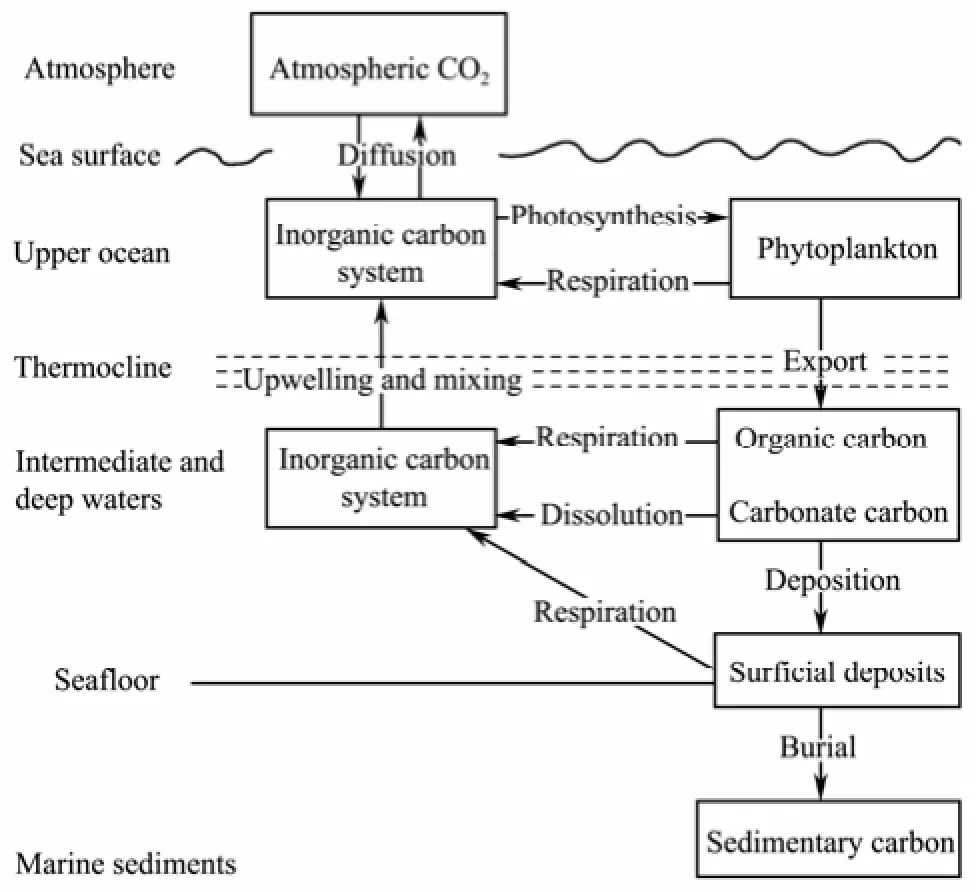
Fig.1 Ocean carbon cycle.
We can learn from Fig.1 that the carbon element always transforms from one entity to another. We define this process as a flow, where there are two terminals: input and output. We name the input terminal Up-flow and the output terminal Down-flow. For example, marine phytoplankton takes up dissolved CO2in seawater through photosynthesis. During this process, CO2will be converted into organic carbon driven by photosynthesis in ocean. Fig.2 shows the transformation.
Based on these definitions, we divide the transformation flow of carbon into three types: carbon fixation flow, predator-prey flow and decomposition flow. It is found that one entity always plays different roles in different flows. Take phytoplankton for example. In the carbon fixation flow, phytoplankton is the behavior subject of photosynthesis, but in the predator-prey flow, it is the object of zooplankton and other preys, and in the decomposition flow, it plays the third role: the decomposed object of marine bacterium. How can we describe this situation about a multi-role entity? Maybe the multiple-inheritance is a solution. But, the implementation and using of the multiple-inheritance is nontrivial. Role theory can well represent an entity to play different roles in different contexts, so it is chosen to solve this problem.
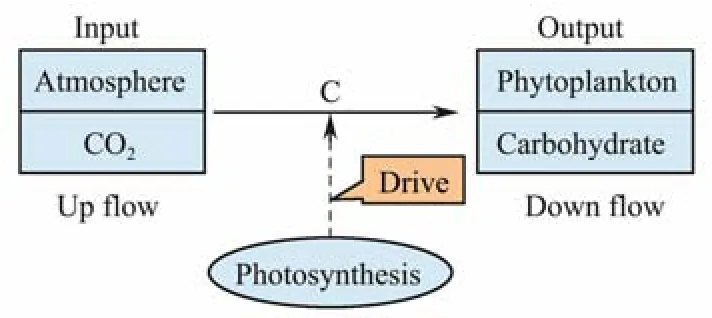
Fig.2 Carbon transformation flow in photosynthesis.
2.2 Role Theory in Hozo
Mizoguchi et al. (2007) proposed their own role theory system based on Guarino’s research foundation (Guarino, 1992). This role theory has been successfully used in medical ontology and the sustainable development of scientific knowledge system in Japan (Kumazawa et al., 2009). Their ontology editor tool Hozo (Mizoguchi et al., 2007) is also based on role theory. Lang and Lapata (2011) implied unsupervised semantic role labeling by splitting the arguments into small clusters and then merged them together to get final results. Yuan et al. (2012a, b) introduced an unsupervised method of semantic role labeling based on the dependency parse by dividing the arguments into different clusters according to their dependency syntactic features, each cluster being one specific semantic role. Cimiano et al. (2011) discussed a model for linguistic grounding of ontologies called LexInfo, which allows us to associate linguistic information to elements in an ontology with respect to any level of linguistic description and expressivity. Beyond that, Li et al. (2008) discussed a new modeling method of domain ontology based on the existing models of domain ontologies, which performs well in logic and operation and can be adopted in modeling certain domain ontology. Now, several impor-tant concepts are introduced of the role theoretical model:
1) Context: a concept which the role is recognized through a relation with.
2) Potential player: a collection of things having the ability to act as the role individual concept.
3) Role-concept: a concept in a specific context whose instances can be played by other individuals.
4) Role-holder: an entity of the basic concept that plays a role-concept is called a role-holder.
Therefore, a general description can be acquired: in a context, if a potential player plays a role of role-concept, it will become a role-holder. Hozo concepts and relationships about predator role in ocean food chain are shown in Fig.3.
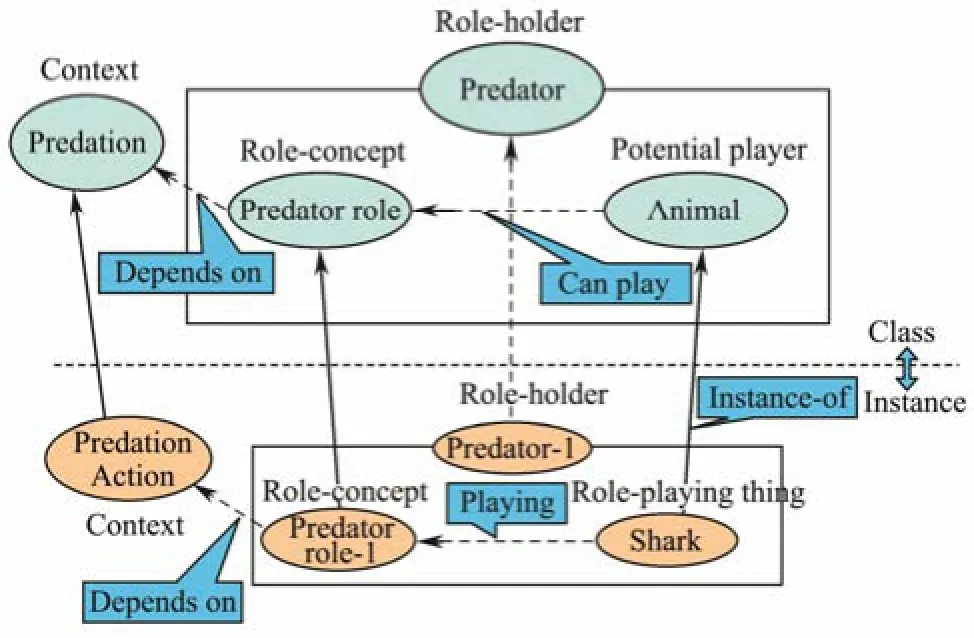
Fig. 3 Predator role in ocean food chain.
In Fig.3, we say an animal can play an instance of a predator role. In particular, a hunting shark is actually playing the specific predator role named predator role-1. By doing so, it is associated with the instance predator-1, an individual predator role holder. The link from Predator-1 to Predator is a broken arrow rather than a solid one like instance-of link to show that the relation is not completely the same as instance-of relation in Fig.3. The upper part as shown in Fig.3 is class level and the lower one is instance level.
3 Ocean Carbon Cycle Ontology Construction
The ocean carbon cycle includes two basic ways: the absorption of CO2through photosynthesis and the release of CO2through respiration and decomposition. Some of the organic carbon generated from photosynthesis is used for its own respiration and release of CO2. The other organic carbon is ingested by phytozoon. It will be transformed into second level organic carbon through digestion and synthesis and continually passes along the trophic level. After the organism dies and is decomposed, the organic carbon will be transformed into CO2or CH4in seawater and participate in the recycling of marine ecosystem. A carbon cycle model is shown in Fig.4.
As can be seen from Fig.4, the ocean carbon cycle has two processes: ① is the carbon fixed flow and ② is organic decomposition flow. Phytoplankton plays a reaction agent role in photosynthesis of ① and a decomposed object role in bacteriolysis of ②; CO2plays the input role in① and the output role in ②; O2plays the output role in① and the input role in ②. Both ① and ② depend on the context carbon cycle.
In the process of ontology construction, we integrated the use of a variety of methods (Li et al., 2008). Ocean carbon cycle ontology development steps are as follows:
Step 1: determine the scope and purpose of the ontology. Ocean carbon cycle ontology is related to the marine environment, marine life, marine non-living and the interactions between them. The ontology development purpose is to set up a knowledge sharing and management system about ocean carbon cycle which computers can understand, to provide a support platform for marine scientific research and cooperation, and to play a positive role in the protection of the marine environment and crisis management.
Step 2: achieve ocean carbon cycle knowledge. The main way to get ocean carbon cycle knowledge is to search for it from the authoritative textbook, marine ecology dictionary, research reports, scientific papers, databases and network resources. In the documentation process, we need the guidance and help of marine experts.
Step 3: perform ocean carbon cycle knowledge conceptualization. This stage needs to extract key words and terms from the acquired ocean carbon cycle knowledge, and determine the unanimously approved domain concept. It also needs the marine experts’ help. It is worth noting that before conceptualizing we need to determine the depth of the conceptual level and the development naming conventions.
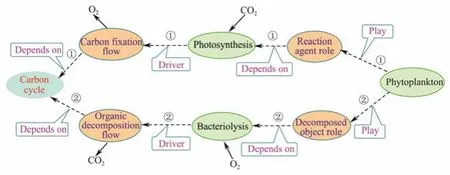
Fig.4 Ocean carbon cycle model.
Step 4: do ontology edit. Represent the ocean carbon cycle knowledge conceptualization model by using role theory, and use ontology editing tool Hozo to add concepts, properties, instances and relations of ontology. The outcome of this stage is the completion of the knowledge representation and storage of ocean carbon cycle ontology.
Step 5: make ontology evaluation and improvement. With the help of marine experts, the ontology is expanded and improved according to the results of evaluation and analysis. In fact, ontology construction is a spiral, continuously iterative and gradually improved process.
Based on the model shown in Fig.5 and the development steps, we have built an ocean carbon cycle ontology using Hozo. Some fragments of the ontology are shown in Fig.5.
In Fig.5, each concept is defined as a class, denoted with rectangles. Each class regards components or attributes as slots, being represented respectively with p/o (part-of), a/o (attribute-of). Each concept node expresses a whole concept or a relation concept and its attributes. The attributes are the part concepts of the whole concept or the participant concepts of the relation concept. A part concept has three components: role-concept, class- constraint and role-holder. The relations link the whole concept and part concept, such as p/o (part-of) and a/o (attribute-of).
From Fig.5 we know the development of ontology and can realize reusing and sharing by using ontology components. The photosynthesis-core is one component of the Phytoplankton Photosynthesis because it is an independent process. In building an ontology about terrestrial plant, it needs to describe the photosynthesis process of plant. Like phytoplankton photosynthesis, plants use the roots to absorb moisture and absorb CO2through the stoma of leaves, transforming them into carbohydrate and excreting O2. Based on the photosynthesis-core component, we can easily build Plant Photosynthesis as shown in Fig.6.
Comparing to Fig.5 and Fig.6, it can be seen that the Photosynthesis-core is the commen part of phytoplankton photosynthesis and Plant Photosynthesis. The component reuse can reduce the workload and improve work efficiency of ontology construction.
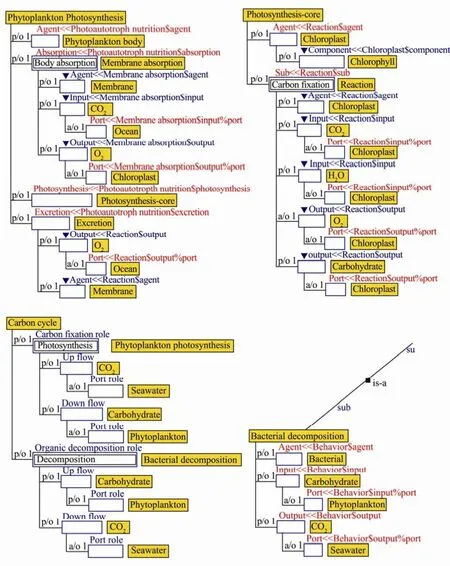
Fig.5 Ocean carbon cycle ontolgy fragments.
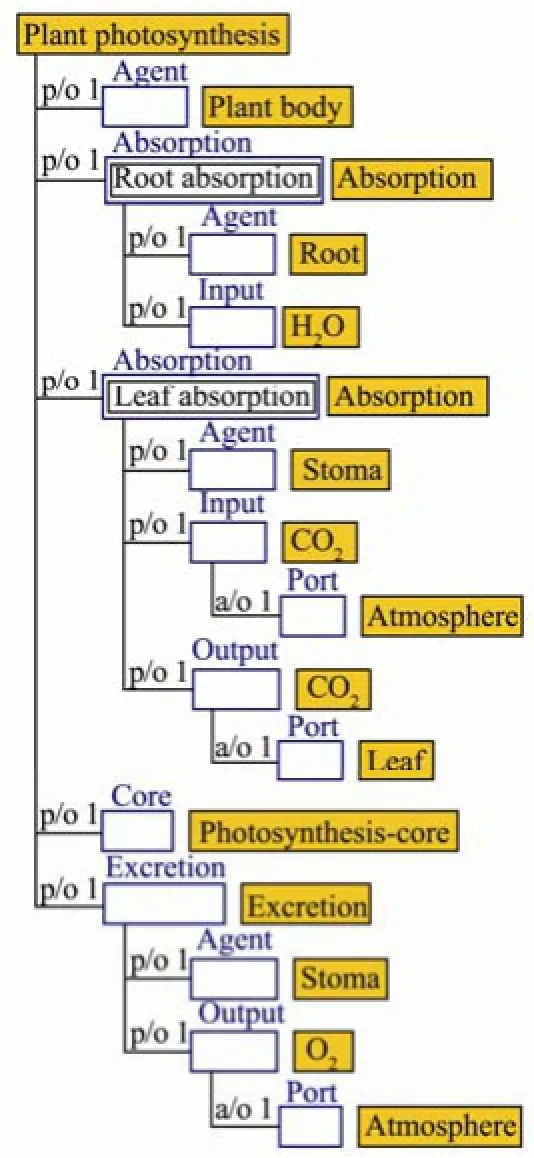
Fig.6 Plant Photosynthesis based on photosynthesis-core component.
4 Ontology-Based Ocean Material Circulation Knowledge Base
Material circulation in the ecosystem is a huge complex ecological process. It can be summarized in two concepts: the pool and the flow. The pool is constituted by the presence of certain biological or non-biological components of the ecosystem in a certain number of a certain compound. Circulation of materials in the ecosystem is actually circulation of them between pools. There are so many concepts and relations among organisms and abiotic organisms. It is necessary to establish a material circulation knowledge base. The tacit knowledge of marine experts can be made explicit and reused.
4.1 Ocean Material Circulation Knowledge Base Framework
Knowledge modeling of knowledge-based systems can generally be divided into three levels: domain layer, reasoning layer and application layer. The domain layer contains the specific areas of problem with solving knowledge and description of domain concepts; the reasoning layer provides the methods of solving problem; the application layer provides an interface for humancomputer interaction and returns the solution results. Based on the ocean carbon cycle ontology, we proposed a knowledge base framework as shown in Fig. 7.
Ontology is a nice tool to describe the domain knowledge, so it belongs to the domain layer. The ontology files edited by Hozo can easily convert to OWL (Web Ontology Language) format. OWL provides a description logic reasoning functions. Description logic extends propositional logic and first-order predicate logic and is based on concepts and relationships. It has a strong ability to express, and can not only be used to describe the relationship between objects, but also comprise logic reasoning ability. It can be used to obtain the implicit knowledge. The reasoning layer includes OWL-QL (OWL query language), SWRL (Semantic Web Rule Language) and inference engine. OWL-QL is considered as a candidate standard language and protocol for query–answering dialogues among Semantic Web computational agents using knowledge represented in OWL. OWL-QL is a formal language and precisely specifies the semantic relationships among a query, a query answer, and the knowledge base used to produce the answer. SWRL is a combination of the OWL DL and OWL Lite sublanguages and extends the set of OWL axioms to include Horn-like rules. It thus enables Horn-like rules to be combined with an OWL knowledge base. An extension of the OWL model-theoretic semantics is also given to provide a formal meaning for OWL ontologies including rules written in its abstract syntax. The inference engine consists of three parts: Parser, RDF Triples and Rules. Application layer acts as a bridge between reasoning layer and end users.
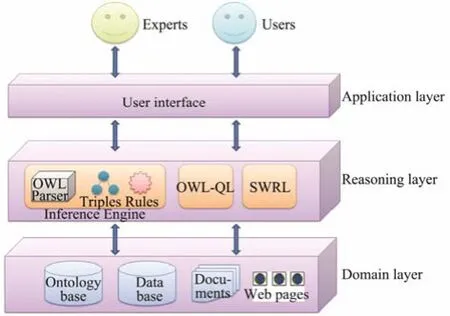
Fig.7 Knowledge base framework based on ontology.
4.2 Carbon Cycle Ontology Query Example
When using OWL-QL, enter premise and query as predicate subject object, with varname for must-bind variables and with namespaces prepended. One triple per blank. To specify a may-bind variable, use ~varname, and for a don’t-bind variable, use !varname. For example, in marine food chain, diatom is an individual of microphytoplankton, daphnia is an individual of zooplankton and shark is carnivore. Daphnia eats diatom, but shark does not eat diatom and daphnia. The instances and relation are described as follows:
SubClassOf (Animal restriction (hasFood, someValuesFrom(Creature)))
Individual (Diatom, type (microphytoplankton))
Individual (Shark, type (carnivore))
Individual (Daphnia, type (zooplankton), value (has-Food Diatom))
Table 1 lists some query pattern and return result related to above example.
From Table 1 we can see that ontology-based knowledge reasoning can be described by semantic triples. For the concepts, instances and relations defined in ocean carbon cycle, when given a query string, the result can clearly tell us the interrelationship between marine materials and all the work is processed by machine automatically.
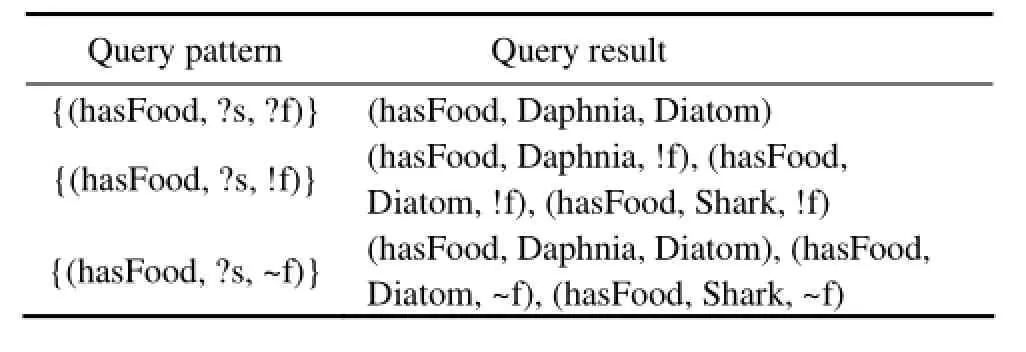
Table 1 Query pattern and result based on ontology knowledge base
5 Conclusion
We mainly discussed the role model of ocean carbon cycle focused on the interactions among plants, animals, micro-organisms and non-living physical factors in ocean. Using role theory, we abstracted carbon transformation as flow, and described the different roles of ocean substance in different flows. We proposed our own ontology construction process considering the existing ontology construction method and built an ocean carbon cycle ontology using Hozo. Based on the ontology, we proposed a knowledge base framework in order to describe and share the marine experts’ knowledge. Ocean carbon cycle ontology is only a part of material cycle ontology in our current research. Next, we will build other ontology models including nitrogen cycle, phosphorus cycle and silicon cycle based on Hozo role theory. And the scale of material cycle knowledge base is also to be expanded.
Acknowledgements
This research is supported by the New Century Excellent Talents in University (NCET-07-0784) and the Foundation of Henan Educational Committee (12A520003).
Abidi, S. R., Abidi, S. S. R., and Kwan, M., 2012. Modeling ocean data and E-Science Semantic Web Services using ontology framework. International Journal of Advanced Computer Science, 2 (8): 280-286.
Cimiano, P., Buitelaar, P., McCrae, J., and Sintek, M., 2011. LexInfo: A declarative model for the lexicon-ontology interface. Web Semantics: Science. Services and Agents on the World Wide Web, 9 (1): 29-51.
Gruber, T., 1993. A translation approach to portable ontology specifications. Knowledge Acquisition, 5 (2): 199-220.
Guarino, N., 1992. Concepts, attributes and arbitrary relations: Some linguistic and ontological criteria for structuring knowledge bases. Data & Knowledge Engineering, 8 (3): 249-261.
Kumazawa, T., Saito, O., Kozaki, K., Matsui, T., and Mizoguchi, R., 2009. Toward knowledge structuring of sustainability science based on ontology engineering. Sustainability Science, 4 (1): 99-116.
Lang, J., and Lapata, M., 2011. Unsupervised semantic role induction via split-merge clustering. In: Proceedings of the 49th Annual Meeting of the Association for Computational Linguistics. Portland, Oregon, USA, 1117-1126.
Li, H. J., Li, J. Q., and Li, M., 2008. Research on modeling method of domain ontology. Computer Engineering and Design, 29 (2): 381-384 (in Chinese with English abstract).
Mizoguchi, R., Sunagawa, E., Kozaki, K., and Kitamura, Y., 2007. The model of roles within an ontology development tool: Hozo. Applied Ontology, 2 (2): 159-179.
Sarmiento, J. L., and Gruber, N., 2007. Ocean biogeochemical dynamics. Geological Magazine, 144 (6): 1034-1034.
Tan, J., Shen, X. Y., and Li, Q. Q., 2009. Study on the feedback between ocean carbon circulation and global climate change. Journal of Meteorological Research and Application, 30 (1): 33-36 (in Chinese with English abstract).
Thilagavathi, B., Raja, K., Das, B., Saravanakumar, A., Vijayalakshmi, S., and Balasubramanian, T., 2011. Heavy metal distribution in sediments of Muthupettai Mangroves, south east coast of India. Journal of Ocean University of China, 10 (4): 385-390.
Xiong, J., Jiang, X. N., and Wang, A. M., 2012. Construction and application of marine ecology ontology based on role theory. Advance in Information Sciences and Service Sciences, 4 (18): 132-138.
Xu, Y. F., Pu, Y. F., and Zhao, L., 2005. Advances in the studies of ocean carbon-cycle model. Advance in Earth Sciences, 20 (10): 1106-1115.
Xu, Y. F., Zhao, L., and Li, Y. C., 2007. Ocean carbon cycle and marine ecosystem dynamics. Marine Environmental Science, 26 (5): 495-500 (in Chinese with English abstract).
Yan, G. A., and Liu, Y. D., 2001. Aquatic ecosystems: Carbon cycle and as atmospheric CO2sink. Acta Ecologica Sinica, 21: 827-833.
Yin, J. P., Wang, Y. S., Xu, J. R., and Sun, S., 2006. Adavances of studies on marine carbon cycle. Acta Ecologica Sinica, 26: 566-575 (in Chinese with English abstract).
Yuan, D., Xu, J. L., Liu, S. Y., and Liu, F., 2012a. Unsupervised semantic role labeling based on dependency parse. International Journal of Advancements in Computing Technology (IJACT), 4 (19): 281-290.
Yuan, D., Xu, J. L., Xiong, J., Liu, S. Y., and Liu, F., 2012b. Semantic role induction based on multi-features. International Review on Computers and Software, 7 (3): 1331-1336.
(Edited by Xie Jun)
(Received December 13, 2012; revised December 30, 2012; accepted April 16, 2014)
© Ocean University of China, Science Press and Springer-Verlag Berlin Heidelberg 2014
* Corresponding author. E-mail: xjl9898@126.com
杂志排行
Journal of Ocean University of China的其它文章
- The Formation of Wind Curl in the Marine Atmosphere Boundary Layer over the East China Sea Kuroshio in Spring
- Wind Wave Characteristics and Engineering Environment of the South China Sea
- Prediction of the Mooring Force of a 2-D Floating Oil Storage Tank
- An Experimental Study on the Wave-Induced Pore Water Pressure Change and Relative Influencing Factors in the Silty Seabed
- Fe-Si-Mn-Oxyhydroxide Encrustations on Basalts at East Pacific Rise near 13˚N: An SEM – EDS Study
- Seasonal Changes in Phytoplankton Biomass and Dominant Species in the Changjiang River Estuary and Adjacent Seas: General Trends Based on Field Survey Data 1959 - 2009
